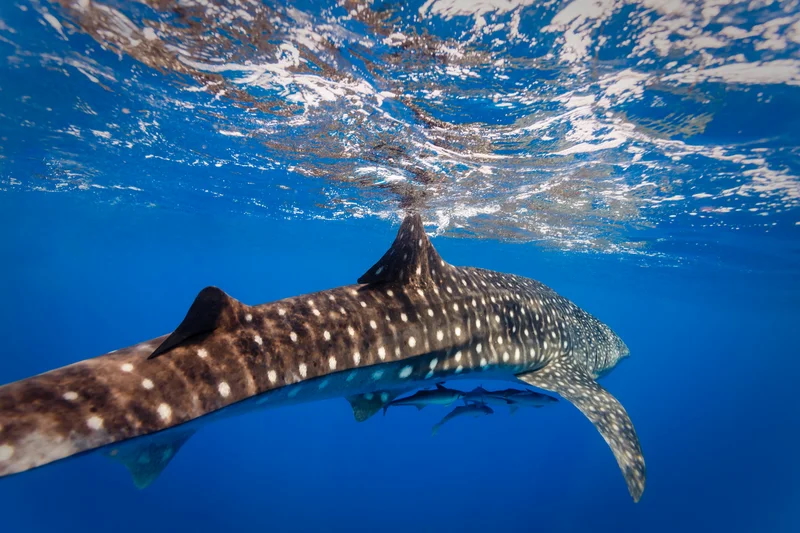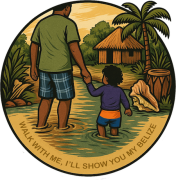The Great Migrations of Belize: A Seasonal Wildlife Calendar
There’s a rhythm to Belize that you can’t find in a brochure.
It’s the rhythm of tides and moonlight, river floods and dry winds — the living clock that moves animals across our land, sea, and sky. Some of these journeys are so subtle you’d miss them if you didn’t know what to look for. Others, like the return of the whale sharks, feel like the whole sea is holding its breath.
This is the first time I’ve brought them all together — a single seasonal guide to the migrations that pass through Belize. It’s for the travelers who want to move with the seasons, not just the tour schedules.
Align your trip with nature’s clock using the Best Time to Visit Belize guide.
Why Migrations Matter in Belize
Belize is a natural crossroads.
- Our reef stretches along a major marine highway for fish, sharks, and sea turtles.
- Our skies are part of the great flyways that connect the Arctic to South America.
- Our rivers and lagoons are safe havens for manatees and countless fish.
For centuries, the Maya read these patterns in the stars and in the tides. Fishermen from Placencia to Dangriga still time their trips by the moon. Today, we can follow these same cycles — not just to see wildlife, but to understand the pulse of Belize itself.
Belize Wildlife Migration Calendar
| Species / Event | Peak Months | Best Viewing Locations |
|---|---|---|
| Whale Sharks (Gladden Spit) | April – June | Gladden Spit and Silk Cayes Marine Reserve (protected area) |
| Nassau Grouper Spawning | Full moons in Dec – Feb | Special spawning aggregation sites (protected closures under Belize Fisheries Department) |
| Sea Turtle Nesting (Hawksbill, Green, Loggerhead) | June – November | Glover’s Reef Marine Reserve, Hol Chan Marine Reserve, Sapodilla Cayes Marine Reserve |
| Manatee Seasonal Movement | Dry season (Feb – May) & Wet season (June – Jan) in different zones | Swallow Caye Wildlife Sanctuary, Southern Lagoon (Gales Point Wildlife Sanctuary), Placencia Lagoon |
| North American Migratory Birds (Fall) | Sept – Nov | Crooked Tree Wildlife Sanctuary (Ramsar site), Half Moon Caye Natural Monument (World Heritage site) |
| North American Migratory Birds (Spring) | Feb – April | Crooked Tree Wildlife Sanctuary, Mountain Pine Ridge flyways (partly protected forest reserve) |
| Butterfly & Insect Migrations | Rainy season peaks (June – Aug) | Forest clearings in Cayo, along Belize River Valley, and near protected reserves like Chiquibul National Park |
Migration Facts
- Whale sharks can grow up to 40 feet long, yet they feed on tiny plankton and fish eggs.
- The Nassau grouper spawning aggregation can include over 1,000 fish at one site — but these gatherings are now rare and heavily protected.
- Sea turtles return to the same beaches where they were born, sometimes after decades at sea.
- The West Indian manatee can travel over 40 kilometers between feeding and resting areas depending on the season.
- Crooked Tree Wildlife Sanctuary hosts over 300 species of birds, many of them long-distance migrants.
- Certain butterfly species in Belize time their movements with the start of the rainy season, following blooming plants for nectar.
- The red-footed booby colony at Half Moon Caye is one of only a handful in the entire Caribbean.
Season by Season
For a bigger picture of weather and travel timing, read the Belize Seasons Guide.
Dry Season (February – May)
The rivers run clearer, and manatees gather in sheltered lagoons like Swallow Caye Wildlife Sanctuary. Migratory birds head north, stopping at Crooked Tree Wildlife Sanctuary, where flocks of wood storks and herons feed in shallow lagoons. This is also the season for the last of the Nassau grouper spawning under the full moon — a sight you can’t see up close anymore, but you can still learn about in fishing communities near the protected reef zones.
Early Wet Season (June – August)
Sea turtles start nesting on the beaches of Sapodilla Cayes Marine Reserve and Hol Chan Marine Reserve, and the nights are sometimes dotted with the glow of fireflies in inland reserves. Rain triggers insect migrations, and butterflies fill the air along the riverbanks of Chiquibul National Park and community farmlands.
Peak Wet Season (September – November)
The skies fill with the return of migratory birds from the north. Half Moon Caye Natural Monument is alive with red-footed boobies and frigatebirds, while Crooked Tree Wildlife Sanctuary turns into a wetland feeding ground for countless waders. Sea turtle nesting winds down, but evidence of their trails and nests still mark the beaches.
Rainforest rhythms intensify during the early wet season—more on that here: Rainforest Belize.
Cooler Months (December – February)
Under the light of the full moon, Nassau groupers gather in ancient spawning grounds, protected by fishing closures around Gladden Spit and Silk Cayes Marine Reserve. Manatees move between lagoons and open waters, often seen in the calm bays around Gales Point Wildlife Sanctuary.

The Most Interesting Migrating Animals in Belize
Marine Giants
- Whale Shark – The largest fish in the world, drawn to Gladden Spit by the spring spawning of snappers.
- Hawksbill Turtle – Critically endangered, nesting on Belize’s southern cayes.
- Loggerhead Turtle – Powerful and long-lived, nesting across the cayes and atolls.
Bird Wonders
- Wood Stork – Elegant wader that arrives in flocks at Crooked Tree.
- Peregrine Falcon – The fastest bird on Earth, passing through Belize during migration.
- Magnificent Frigatebird – Seen in greater numbers during certain seasons, their forked tails and aerial mastery are unforgettable.
- Ruby-throated Hummingbird – Tiny, jewel-like travelers making huge journeys.
Special Fish Movements
- Nassau Grouper – Spawns in massive gatherings under the winter full moons.
- Cubera Snapper – Part of the spring spawning aggregation that also feeds whale sharks.
Insect Journeys
- Kite Swallowtail Butterfly – Often seen in great numbers after early rains.
- Cloudless Sulphur Butterfly – Known for mass movements across forest clearings.
After early rains, butterflies surge along forest edges in places like Elijio Panti National Park.
Marine Mammals
- West Indian Manatee – Slow-moving herbivore shifting between lagoons and coastal areas with the seasons.
Manatees shift between lagoons and river mouths seasonally. Learn the river’s role here: The Belize River.
Traveling with the Migrations
Seeing a migration in Belize isn’t just about timing — it’s about respect.
- Stay at a distance from nesting turtles and feeding whale sharks.
- Use a local guide who understands the patterns and can get you there without disturbance.
- Support conservation areas that protect these animals’ routes — many rely on tourism dollars to keep protecting their habitats.
Every migration is a story in motion. By following them, you’re stepping into a rhythm that existed long before we had roads or resorts — and that’s the kind of Belize worth walking with.
Did you know Belize’s migrations include mass bird arrivals and whale shark feeding? See more in 25 Interesting Facts About Belize.
If this post reminds you why travel matters, feel free to share it. This is the side of Belize we rarely see online — but deeply feel when we’re here.
